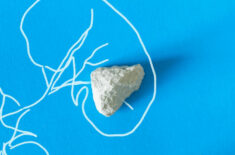Scars are evidence of your body’s healing capabilities.
Sometimes, like with stretch marks, they’re a sign of change.
Whether you perceive your scars as a source of pride or they make you cringe, essential oils and aromatherapy can help improve the appearance of your skin and scar tissue.
Essential Oils As Natural Remedies For Skin Healing
Essential oils (EOs) are highly concentrated plant extracts that contain several healing properties that can help speed up wound healing and reduce the appearance of scars.
They support the skin healing process by regenerating dead or damaged skin cells and balancing skin tone.
Many EOs possess strong antibacterial, antifungal, antiseptic, and anti-inflammatory properties.
This makes them very effective at treating various skin conditions like:
Thanks to their antioxidant properties many EOs are also useful as skin care tools for different skin types. They can help reduce the appearance of acne scars and boost anti-aging.
The Best Essential Oils For Healing Scars & Skin Health
Tea tree oil (Melaleuca alternifolia)




- Antibacterial properties
- Anti-inflammatory properties
- Anti-fungal properties
- Antiseptic
- Antimicrobial properties
Tea tree essential oil is a highly potent antiseptic so it should be used with care and never applied directly on the skin without diluting with a carrier oil.
It can be an effective spot-treatment though it can also dry the skin so it’s important to follow its application up with a moisturizer that hydrates the skin.
You can also look for a high-quality face wash and cleanser containing tea tree oil.
Helichrysum oil (Helichrysum italicum)
- Antibacterial properties
- Anti-inflammatory properties
- Anti-fungal properties
- Antiseptic
- Antimicrobial properties
Helichrysum essential oil also has antioxidant properties that can help prevent scarring by stimulating new cell production. It’s also believed to increase the production of collagen, which gives skin its elasticity and youthful appearance.
Lavender oil (Lavandula angustifolia)

- Antibacterial properties
- Anti-inflammatory properties
- Anti-fungal properties
- Antiseptic
- Antimicrobial properties
- Wound-healing & scar-reducing properties
Lavender essential oil is gentle for most sensitive skin types while also being a potent acne treatment addition.
Its main active components linaool and linalyl acetate are both known to reduce inflammation and help accelerate wound healing while reducing scarring. (2)
Frankincense oil (Boswellia carterii)


- Antibacterial properties
- Anti-inflammatory properties
- Antiseptic
- Antimicrobial properties
- Wound-healing & scar-reducing properties
Frankincense essential oil is a known potent inflammation fighter that also improves the skin’s healing process. (3)
It can help to prevent and neutralize scars.
As an added bonus, Frankincense oil also appears to help aging skin, as it can accelerate new skin cell production while reducing the appearance of dark spots and wrinkles.
Other essential oils that are beneficial for your skin are:
- Carrot seed essential oil
- Neroli essential oil
- Rosehip seed oil
- Geranium oil
- Sandalwood
- Cedarwood
- Chamomile
- Rosemary
- Myrrh
- Patchouli
How To Use Essential Oils For Skin Healing & Scars
The best and most effective way to use EOs for scar treatment is to apply topically.
Always dilute EOs with a carrier oil like coconut oil, nut and seed oils like almond oil, or jojoba oil. Stick to 2-3 drops of EO per 1 teaspoon of carrier oil.
For best results apply to the affected area at least twice a day – morning and night.
Create your own essential oil blends to enhance and maximize the medicinal and therapeutic effects.
Adding Vitamin E oil to the mixture will help accelerate healing, prevent scars, and may even help reduce the appearance of old scars.
Safety Concerns
When used safely, EOs usually offer little to no side effects.
When used topically as a natural aid to reduce fevers, EOs must always be diluted in a carrier oil to prevent skin irritation and reactions. (Especially if you have sensitive skin.)
It’s advisable to perform a patch test on a non-affected area of the skin and wait 24 hours to confirm no allergic reaction.
If you experience any adverse reaction to any oil, discontinue use immediately and consult your dermatologist to seek medical advice.
Some oils are not suitable for babies, young children, and pregnant or nursing women. Research the contraindications for each oil you use prior to applying them.
EOs aren’t regulated by the FDA (Food & Drug Administration), so it’s essential to do your research before buying products to make sure they aren’t diluted or contaminated.
Always choose high-quality, certified organic, and therapeutic grade products to make sure you’re experiencing the full medicinal benefits.













